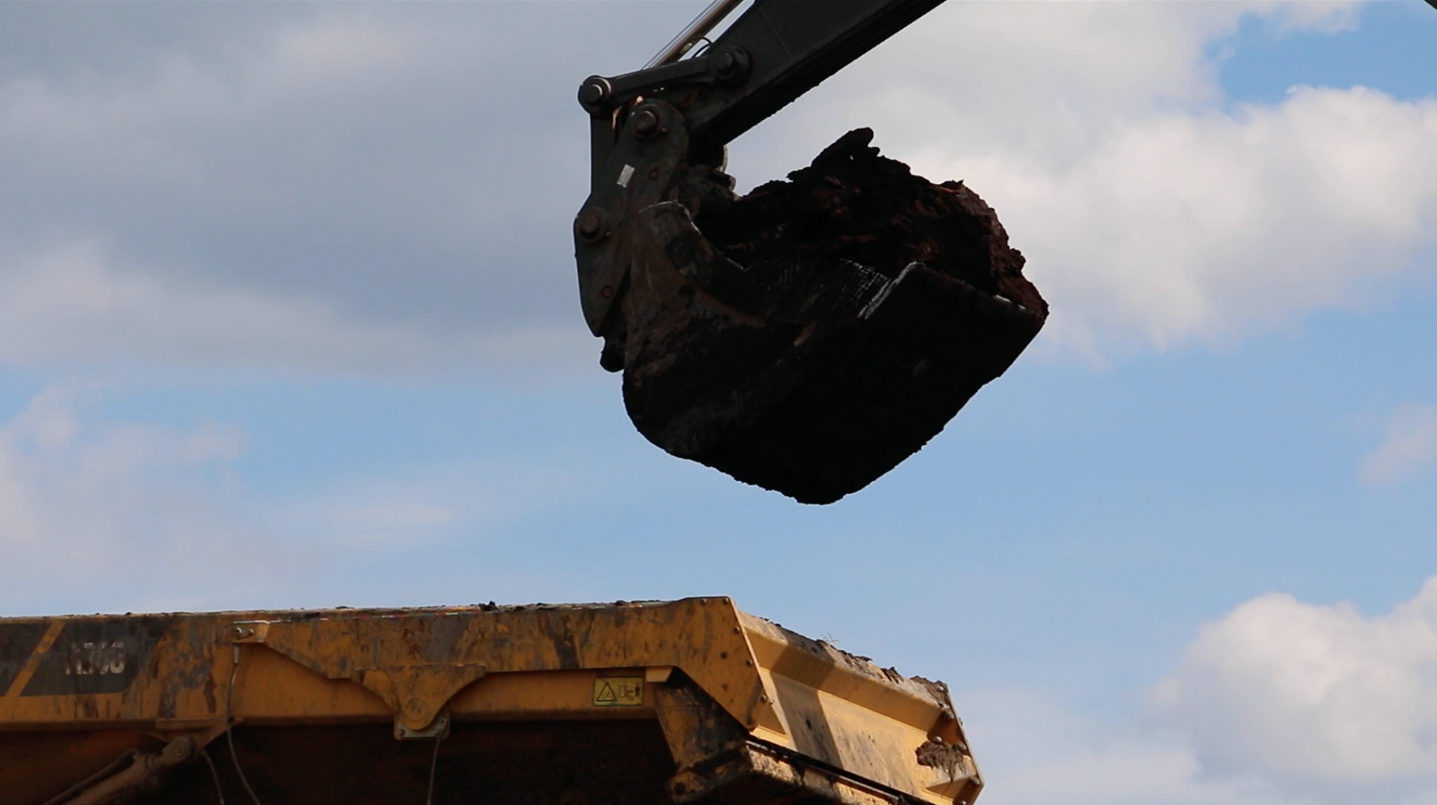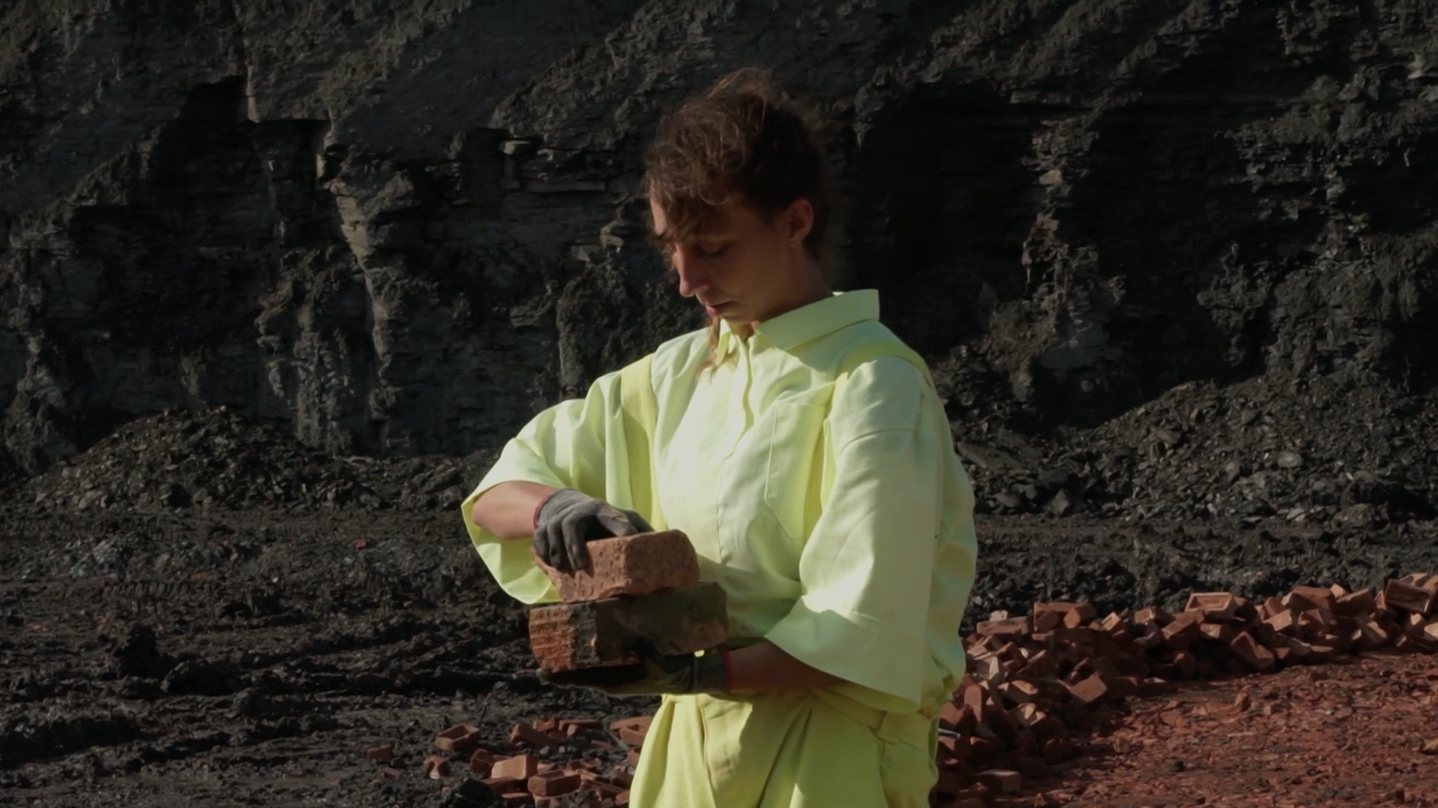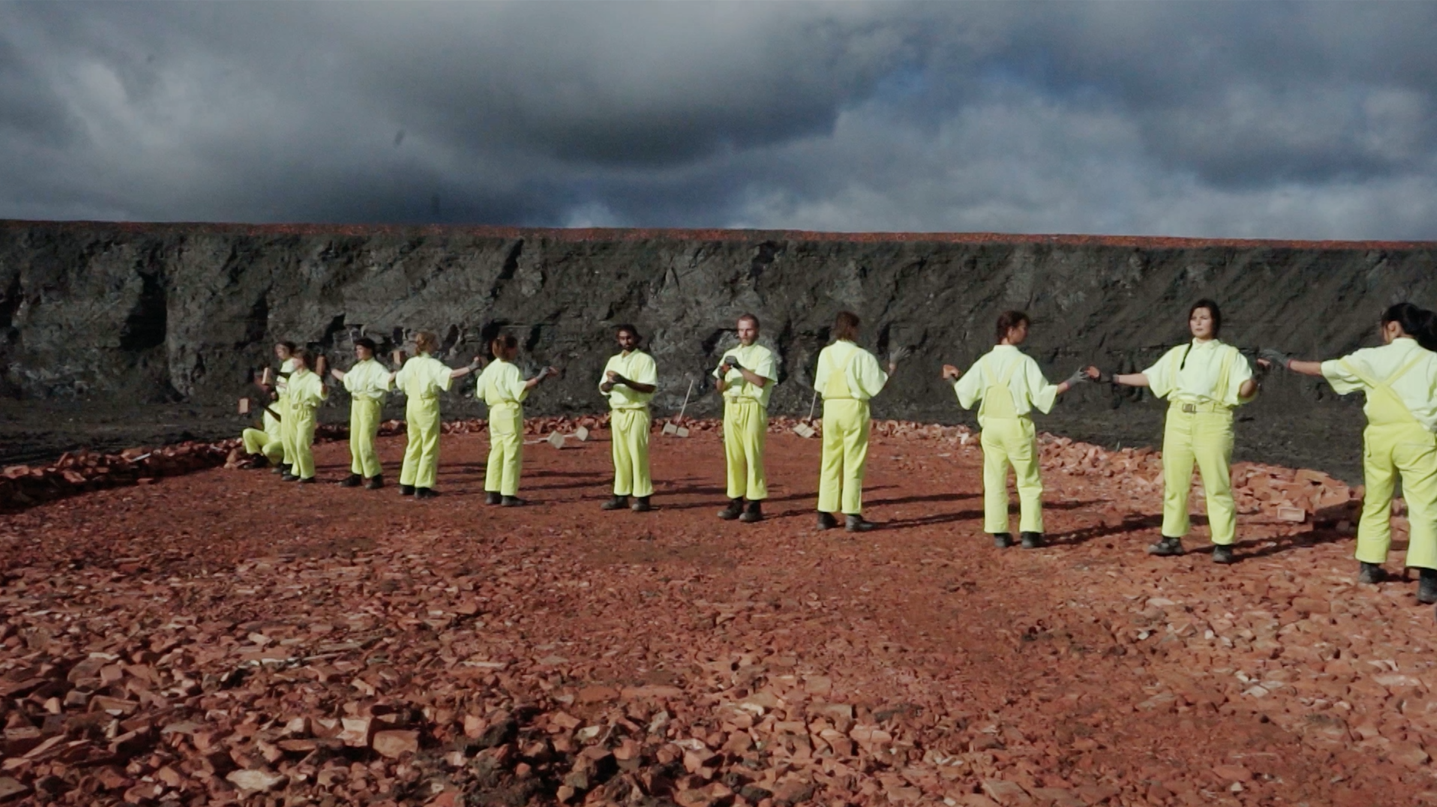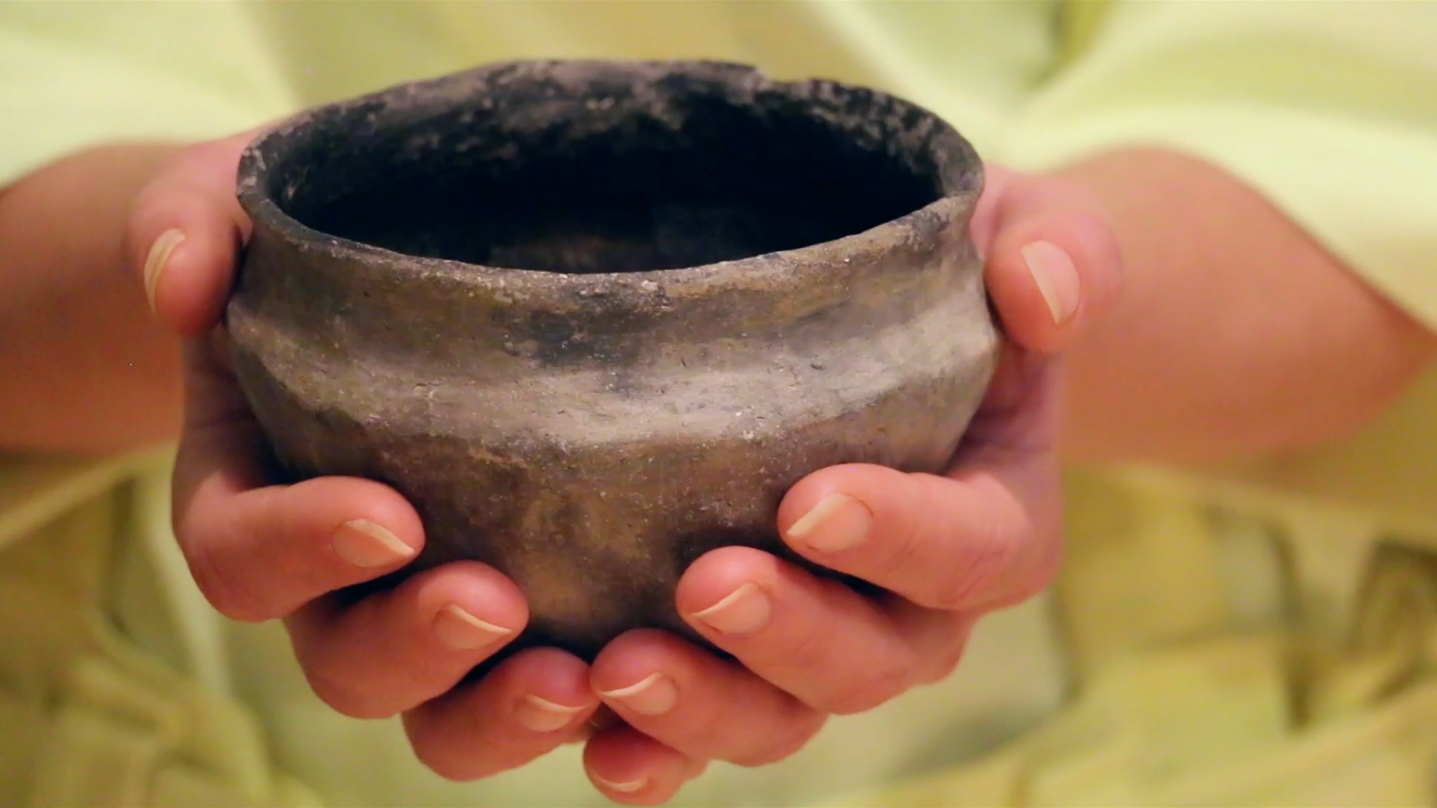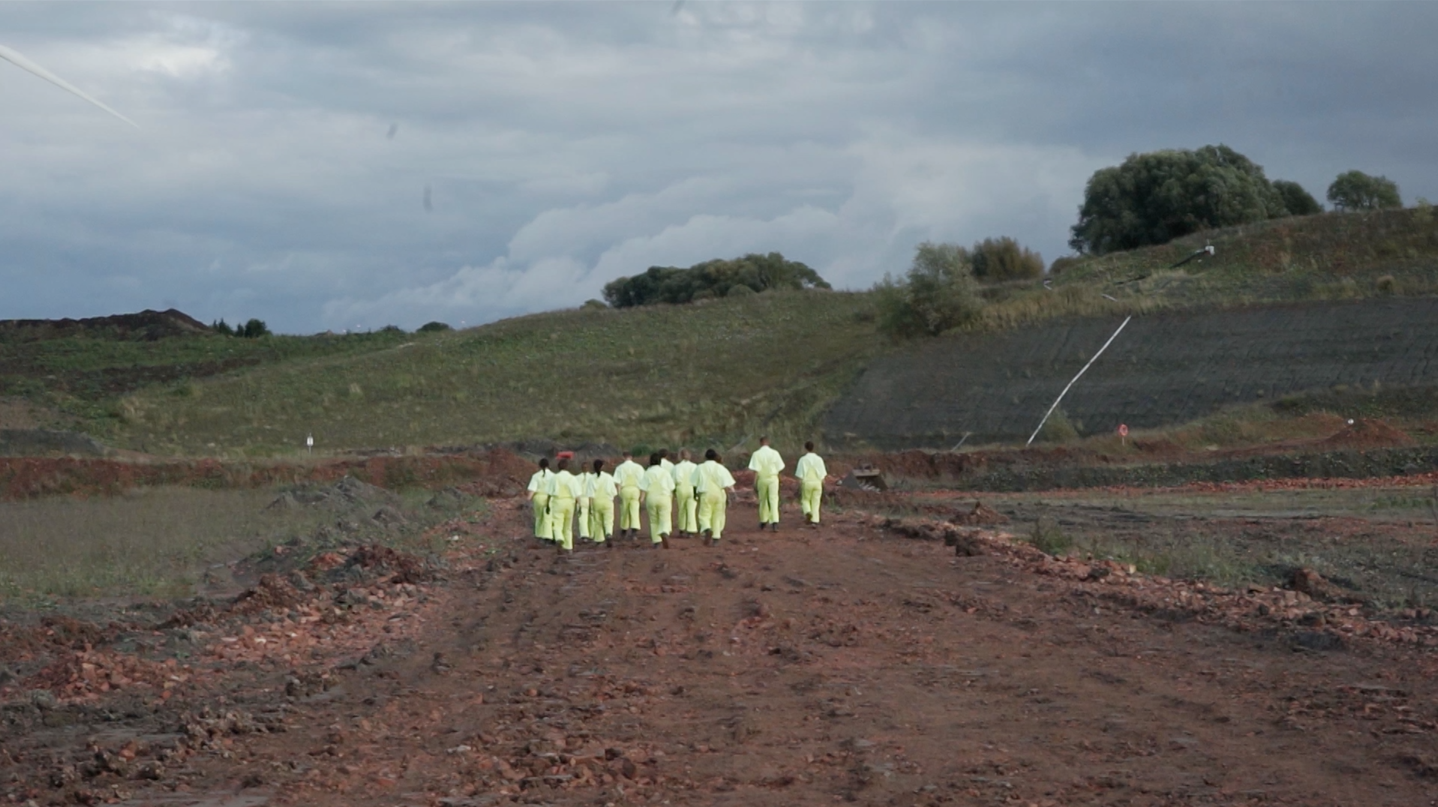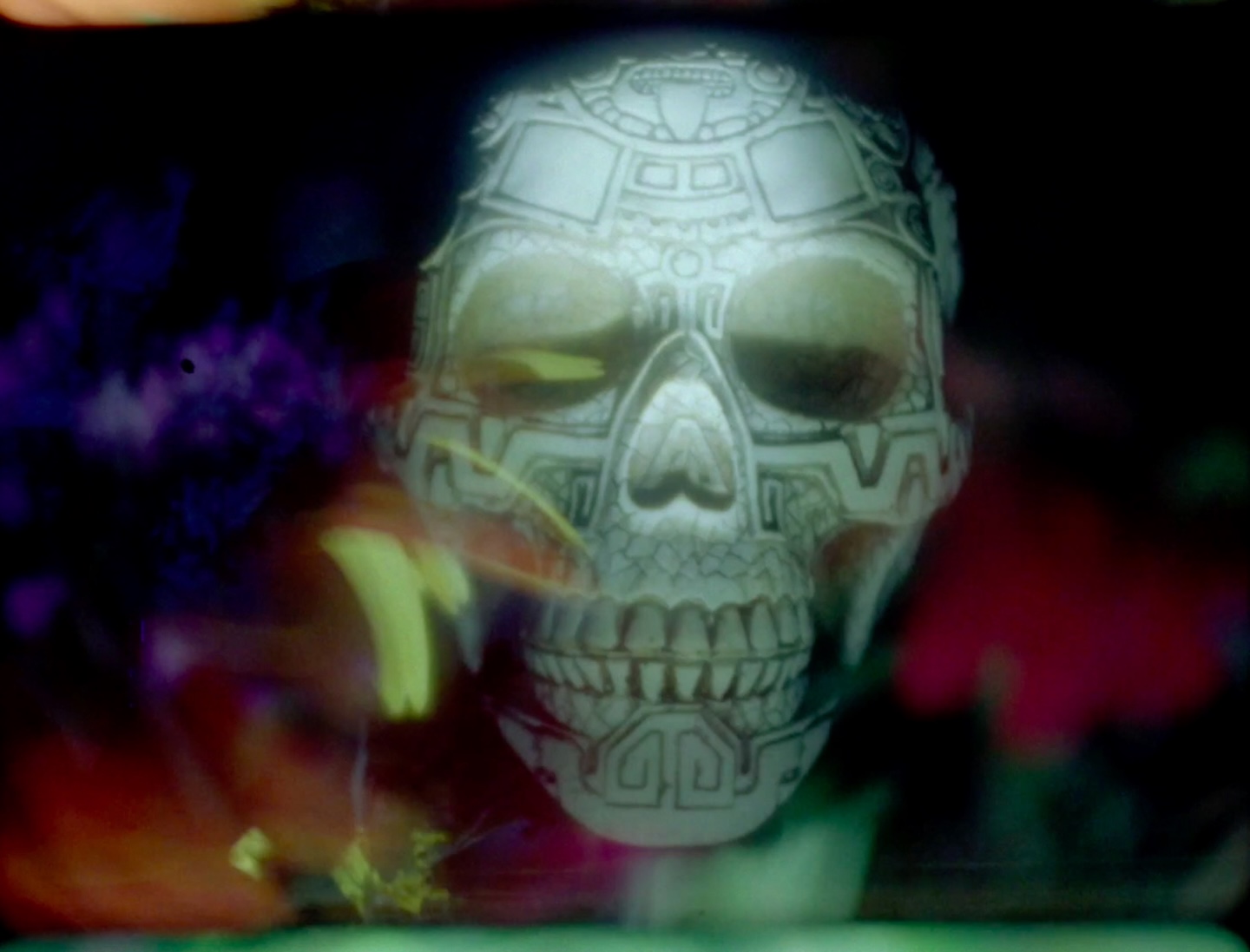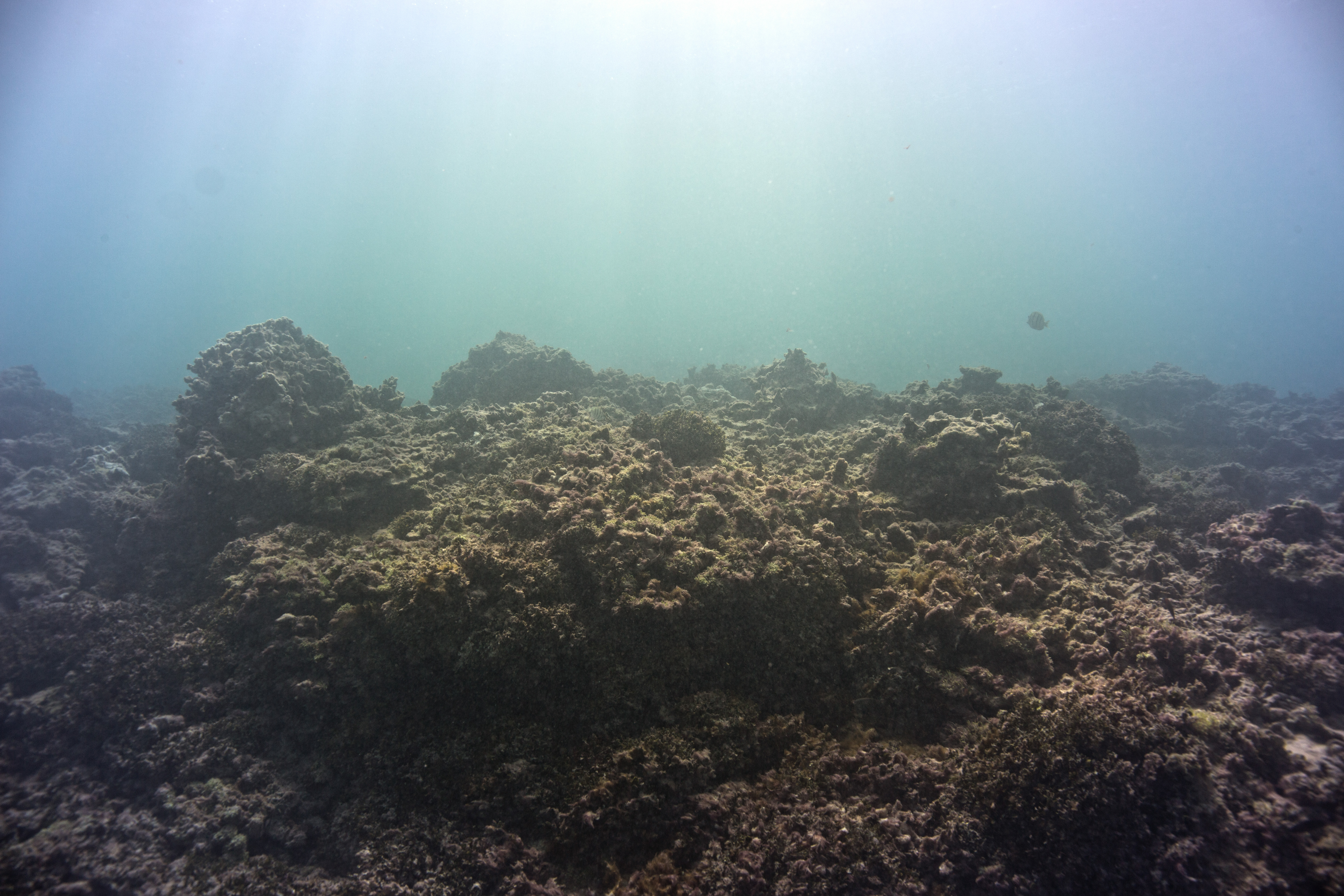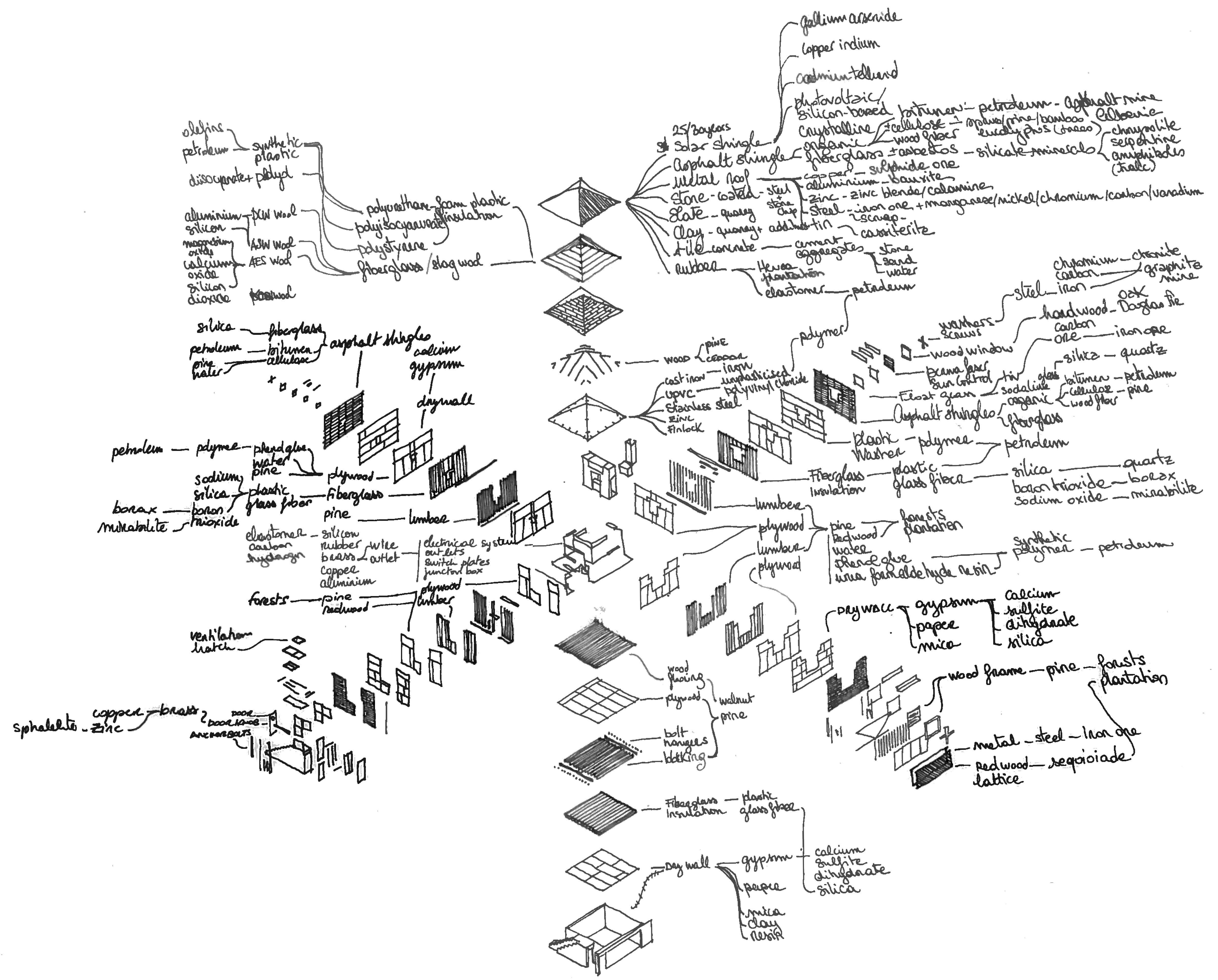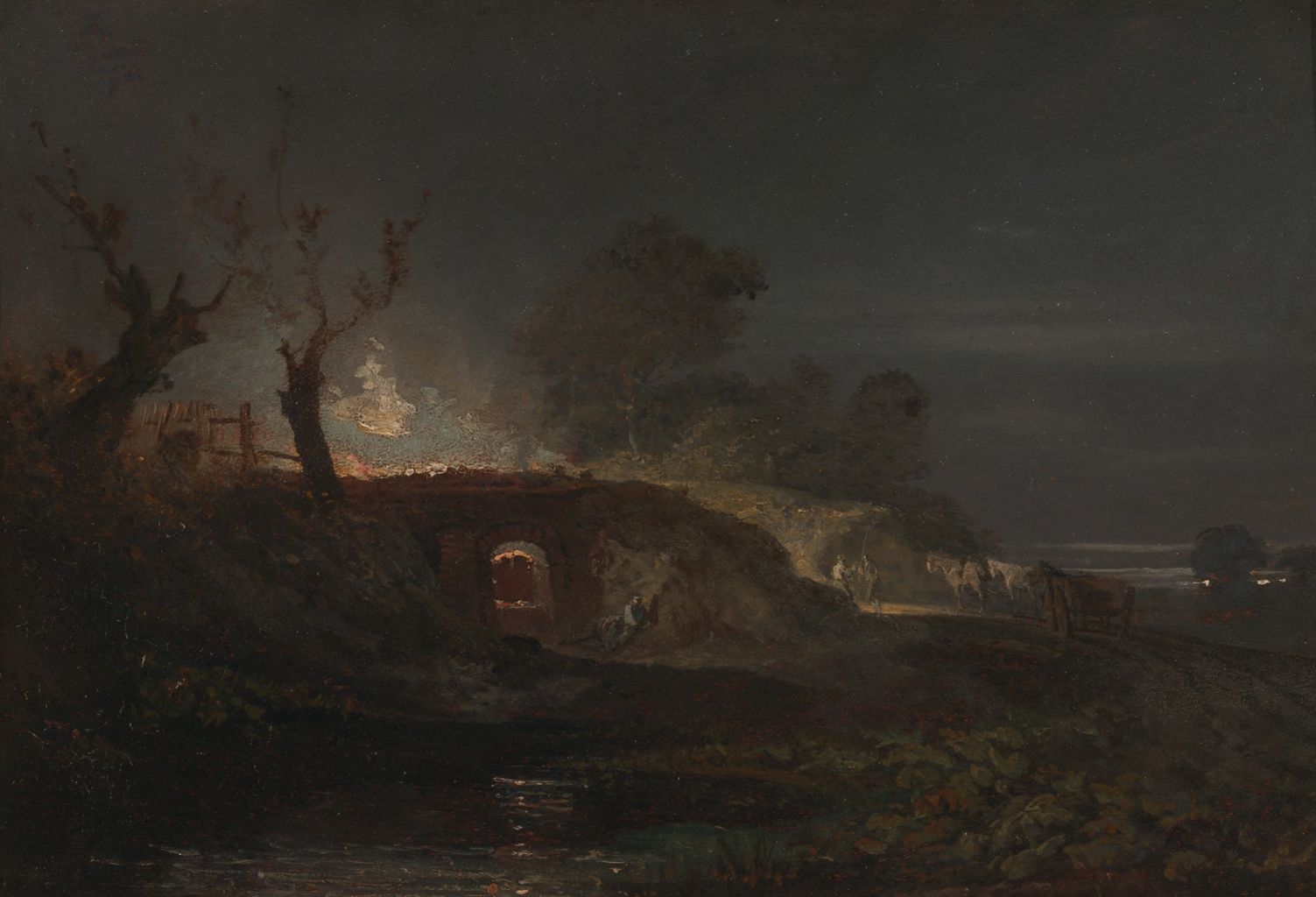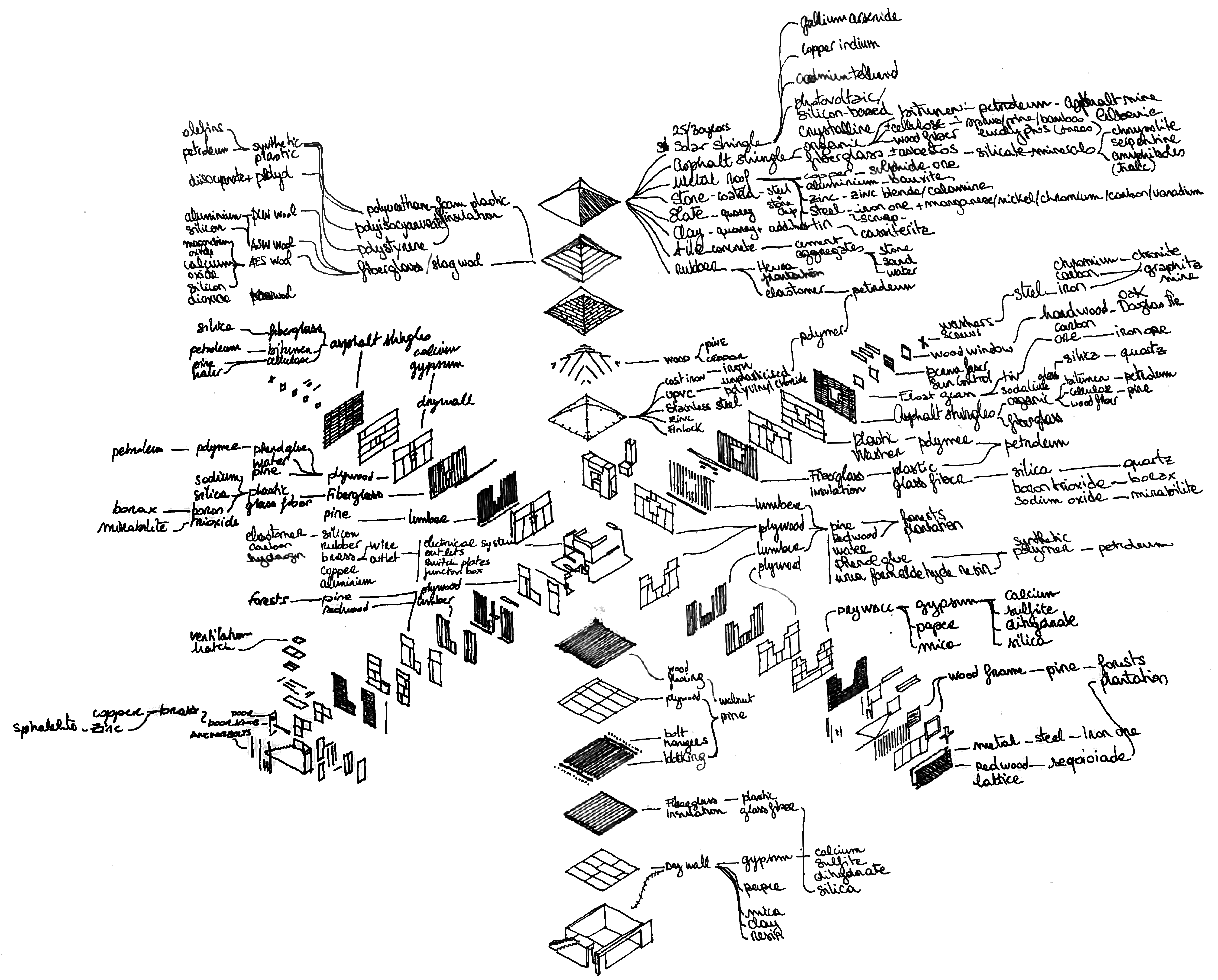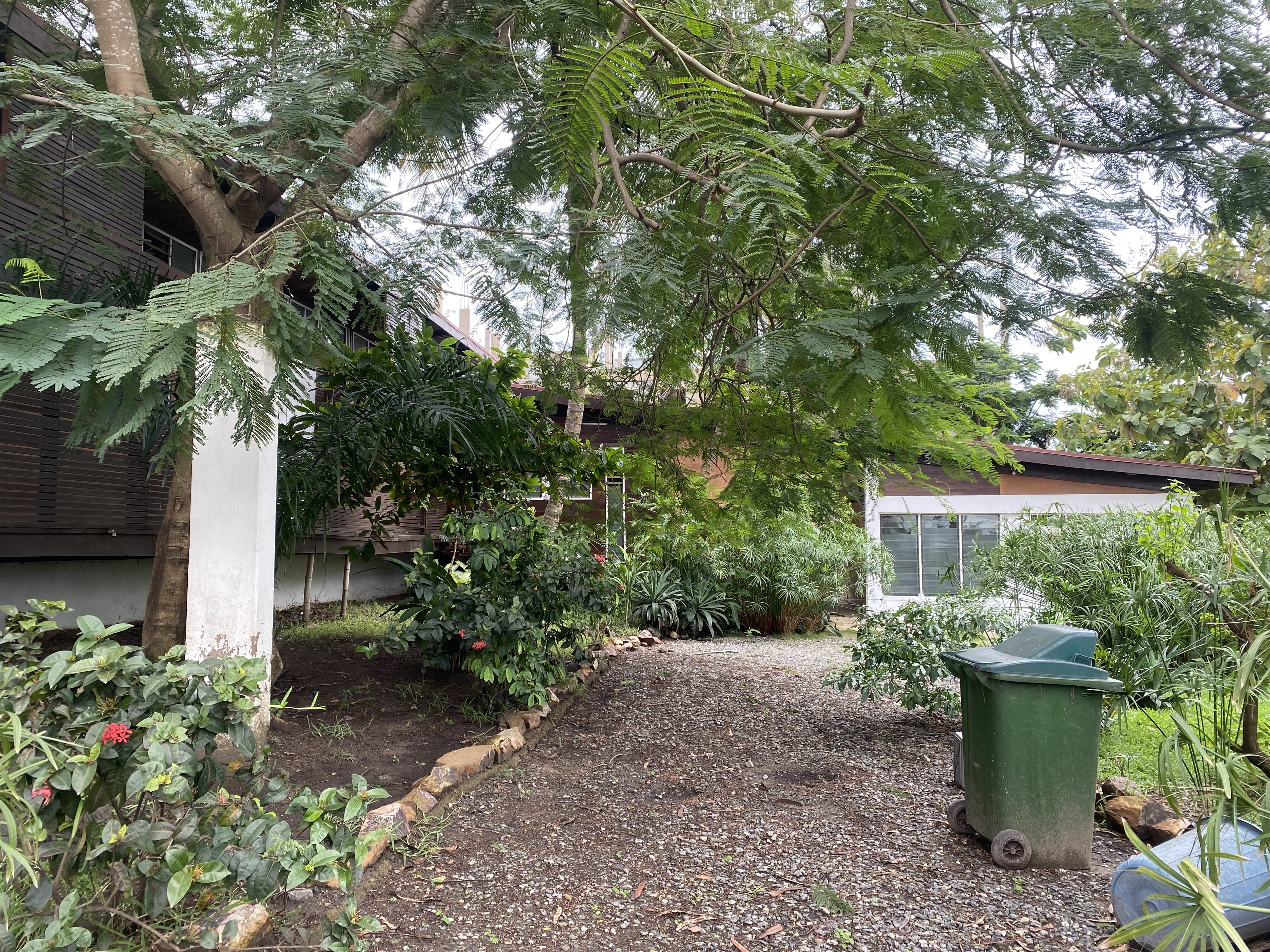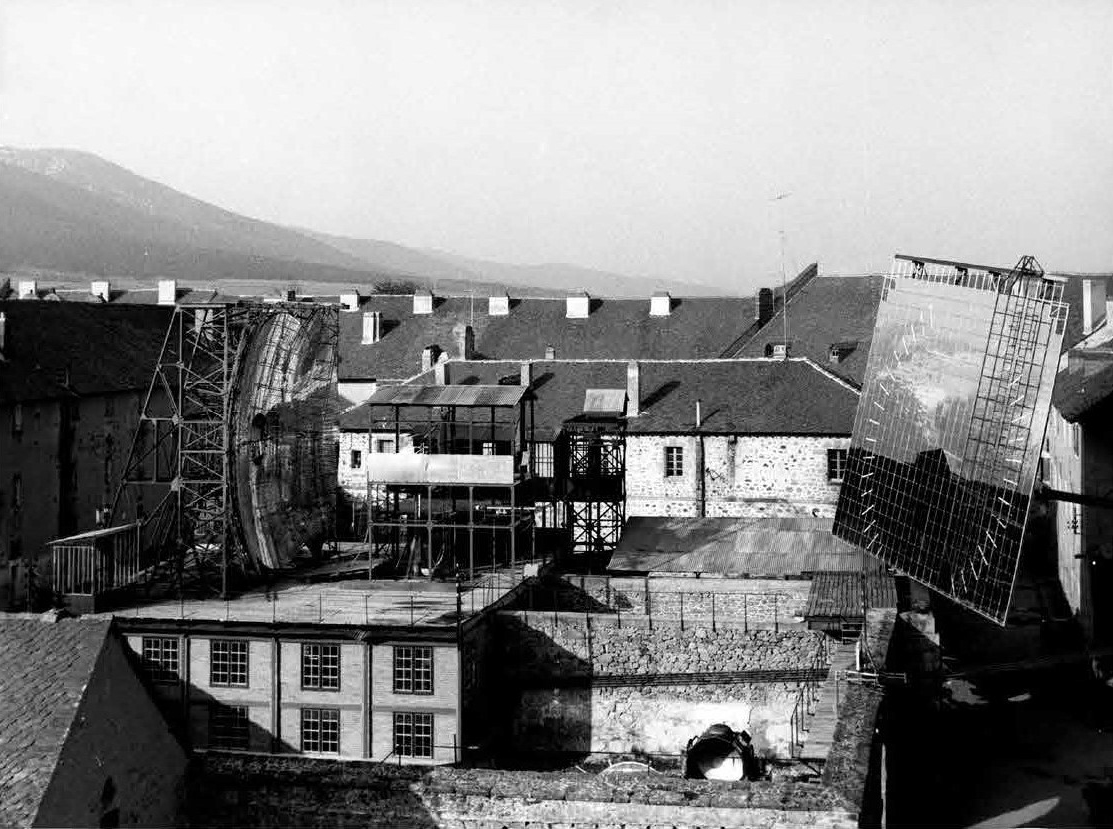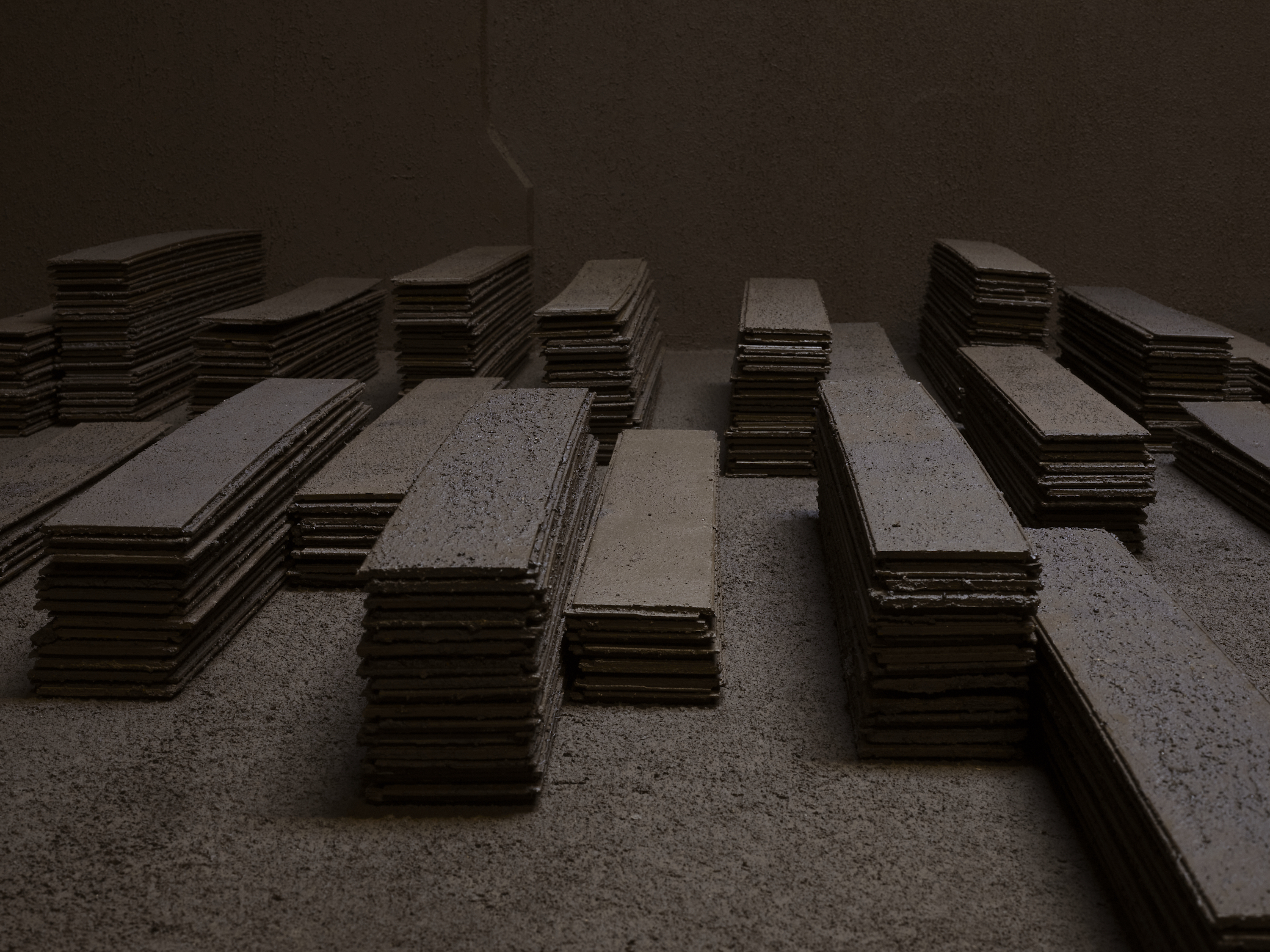At first glance, the brick is a very simple thing. Perhaps the oldest building material still in use, bricks were made and sun-dried in hot climates as early as 7000 BCE; the fired brick with which we are familiar has been around since c. 3500 BCE. The brick’s making is relatively easy to imagine, as is its use. Its lack of technical complication evokes a utopian past unburdened by the impenetrable nature of contemporary technological life, constructed simply from earth and fire.
Deepening (2020), a short video by the Belfast-born and London-based artist Laura Wilson, is set in a 150-year-old brick quarry outside of Peterborough. The video was produced as part of an exhibition commissioned by New Geographies, a project funded through Arts Council England that looks to reimagine the cartography of the East of England through the creative documentation of neglected or overlooked places. Wilson’s project, an installation that included artifacts, original works, a performance and the video discussed here, was organized around a Bronze Age settlement dating to c. 850 BCE that was discovered at the edge of the quarry in 1999. Through the geographical and temporal conjunction of a modern site of industry and an ancient settlement, Deepening asks us to pay more serious attention to the deceptively simple brick, and by doing so to reconsider the tangled triad of nature, labor, and human ingenuity.
The video opens with the view from a car. In less than a minute we see windmills and a nondescript commercial building embedded in an expanse of deep ochre. A pristine blue sky. A vast, flat panorama bisected by a distant tree line. Piles of discarded brick form an uneven line past a collection of heavy machinery. Twelve people in fluorescent yellow uniforms mill about, carrying anachronistic wooden hods. A brief close-up of clear water running over stones, and another of standing water that has absorbed the color of the ground in a tranquil suspension. The backfill blade of an excavator reaches down from the top of the frame to scrape clay from the striated face of a pit. The clay, marked by the process of extraction, is unavoidably beautiful. Despite the overt presence of industry, several of the images taken on their own suggest an idea of untouched nature that has grown increasingly remote from the Anthropocene imagination.
But this nature was long ago touched. In 1999 employees noticed strange poles sticking out of the ground at the edge of the quarry. A test dig was ordered, and archeologists determined that these seemingly inconsequential objects were, in fact, evidence of long-buried human activity. The site, known as Must Farm, has since revealed itself as the best-preserved Bronze Age settlement ever discovered. It had been occupied for less than a year and, because of a sudden and disastrous fire, the pile-dwelling had collapsed in situ. The tragedy of its inhabitants is a great boon for contemporary scholars. Artifacts were left as they were used, and many more survive today than would had the inhabitants methodically dispersed from the place over time. Among the remnants are brick ovens, textiles, bowls nearly the precise size of the human stomach, and glass beads which indicate that the settlement was not isolated, but embedded in a geographically extensive trade network.
Deepening is in many ways an enactment of critic Lucy Lippard’s notion of overlay, an archaeological model which understands objects according to the layer they inhabit in relation to other objects. In her extended meditation on contemporary art and prehistoric artifacts, Overlay: Contemporary Art and the Art of Prehistory (1983), Lippard wrote that she wanted to bring the practices of modern abstraction together with “the deeply moving vestiges of a past so distant that it is virtually unknowable,” in order to give familiar art objects an historical depth, and to establish a more expansive understanding of the way that art functions in social and political life.1 Wilson’s work also addresses the overlay of nature and art, which Lippard called a “sensuous dialectic.” A dialectic is not the simple interaction of two distinct spheres: culture does not work on a nature that exists before or outside of it. Rather, the two are co-constitutive: society makes nature and is also made by it, and so the two work on each other in an ongoing process of creative transformation. Land Art operates on the premise that culture in general and art in particular emerge from this entanglement of geographic place and human activity. In his 1967 essay for Artforum, “Toward the Development of an Air Terminal Site,” Robert Smithson emphasized the slippage between various natural and manmade portions of the landscape in his argument for using “the actual land as medium.” Just like intentional earthworks, he suggested, “pavements, holes, trenches, mounds, heaps, paths, ditches, roads, terraces, etc. all have an aesthetic potential.”2
In just over fifteen minutes, Deepening proves Smithson’s point about potholes. But there is no naturalizing impulse here—no desire to aesthetically absorb industry into the register of nature; no erasure of human labor. If Deepening is considered as an earthwork rather than a hybrid of video and site-specific performance, the emphasis is decidedly on work as a social relation that is always already entangled with nature. Even something as humble as a brick contains the whole world, as Martin Heidegger once said of a jug, and, as we see in Deepening, can generate entirely new ones. The ancient settlement was preserved because it was destroyed by fire, and discovered as a result of an industry—brick-making—that is extractive yet historic in its own right (not to mention quaint by today’s measure of environmental destruction). Its very existence suggests that the accumulation of craft knowledge contained in modern building practices has a longer history—one that is literally buried. At the same time, the film draws our attention to the discontinuities, displacements, and disruptions that prevent any total knowledge of human development, any complete history of the commodity. It also suggests that disruption, dislocation, and intrusive excavation might combine to produce sudden revelations. As a project that grew out of a collaboration with archeologists, featuring a scene in which workers read, in chorus, from the micromorphology of the discovered artifacts, the film is also insistently about the effort required to recover knowledge of relations across time. This effort is, on its own, a form of construction; collaborative labor involving complex technologies that are themselves the crystallization of centuries of human work. Psychoanalytic readings are tempting.
But this is, insistently, a video about work—which has never been separable from nature, either in reality or in imagination. John Locke’s labor theory of value is largely predicated on the “mixing” of labor with nature. For Karl Marx, labor is clearly “not the source of all wealth. Nature is just as much the source of use values (and it is surely of such that material wealth consists!) as labor, which itself is only the manifestation of a force of nature, human labour power.”3 But the fact of the project’s existence as a work of art complicates its relationship to value. It is, in a Lockean sense, unproductive, and in a Marxist one, lacking the use value that would accrue to something like a brick.
Artists have been self-consciously addressing the question of labor since at least the nineteenth century. The mid-twentieth century emergence of conceptual art opened the field to a far more expansive project of social inquiry that could move away from representation—the figure of the worker—toward a more forensic exploration of work itself. Art, in this socially extensive mode, could also reflect on the figure of the artist as a worker and—as many feminist artists have done—begin to critically assess and expose the reproductive labor (cleaning, packing, installation, and other gallery maintenance) that is often unseen, but that maintains the public-facing figure of the artist as autonomous agent. Works like New York-based feminist artist Mierle Laderman Ukeles’s Manifesto for Maintenance Art 1969! (1969), and her subsequent installation at New York City’s Department of Sanitation as its unpaid artist-in-residence for nearly four decades, revealed that the very person of the artist was itself a commodity—a thing that appeared to exist independently and have its own value and agency but was, in fact, the product of a vast web of productive and reproductive processes. The artist wasn’t dead, but simply dependent. Which may be much worse from the standpoint of capital, which has entrusted art with the important ideological work of reifying the individual, suggesting that capitalism is uniquely suited to creative flourishing, and, most importantly, positing a form of production that is exempt from exploitation. Artists, many of them influenced by the Wages for Housework movement, have explicitly addressed this issue of hidden and unacknowledged labor through moving image and other documentary strategies in works such as the Berwick Street Collective’s Nightcleaners Part 1 (1975). That an art object—the apotheosis of creative independence—could not come into existence without someone to scrub the toilet is inconvenient, to say the least.
The figure of the worker that emerges from Deepening is not “the worker” of the capitalist, cultural imagination. In fact, “real” workers are visually absent—a strategy that successfully displaces the viewer from the accidental role of supervising manager or overseer. Instead, the worker is signified by the uniformed chorus (notably presented as a collective). She is also implied: off-screen, operating the excavator or driving the car that brings us into the video; conspicuously absent from the interior of a building; the anonymous author of the micromorphology report; the disappeared maker of ancient bowls.
Also hidden by the video is the labor of the artist and her collaborators. In the case of the yellow uniforms, this absence is conspicuous: the clothing reads as commercially produced but is, in fact, custom-made and hand-dyed. Wilson’s relationship with the quarry sprang from her own apprenticeship to a brick-layer. The division between art, craft, and so-called “unskilled” labor, the video suggests, is utterly useless for thinking about production, artistic or otherwise. It is the unstable relation of art-making to work as we commonly envision it that allows for such a powerful deconstruction of this division of labor. At a moment when art is easily absorbed into commercial circuits as pure exchange value by advanced, financialized capitalism, Deepening is a reminder of art’s discursive and critical advantages.
Lucy Lippard, Overlay: Contemporary Art and the Art of Prehistory (New York: The New Press, 2010), 5.
Robert Smithson, "Towards the Development of an Air Terminal Site," Artforum (Summer 1967) https://www.artforum.com/print/196706/towards-the-development-of-an-air-terminal-site-36711.
Karl Marx, “Critique of the Gotha Program,” in Modern Political Thought: Readings from Machiavelli to Nietzche, ed. David Wootton (Indianopolis/Cambridge: Hackett Publishing Company, 1996), 884

